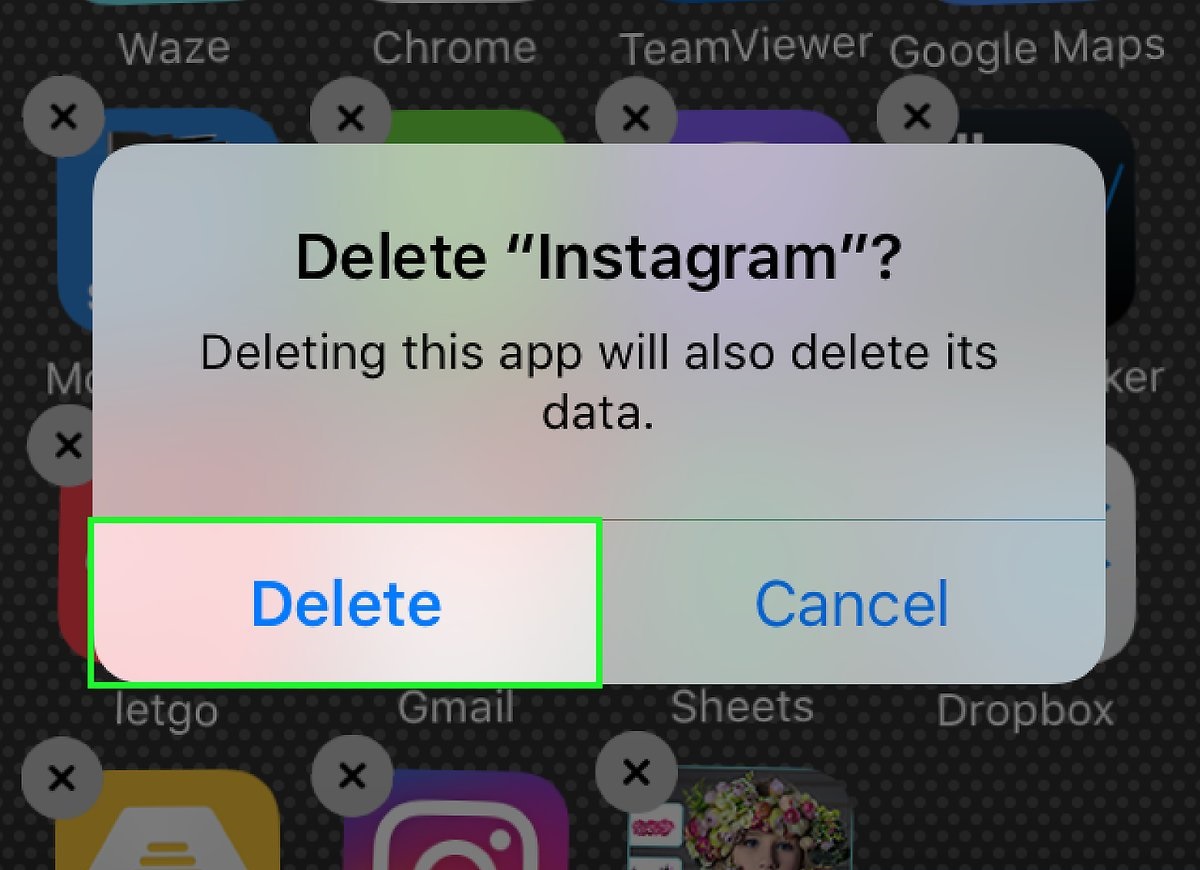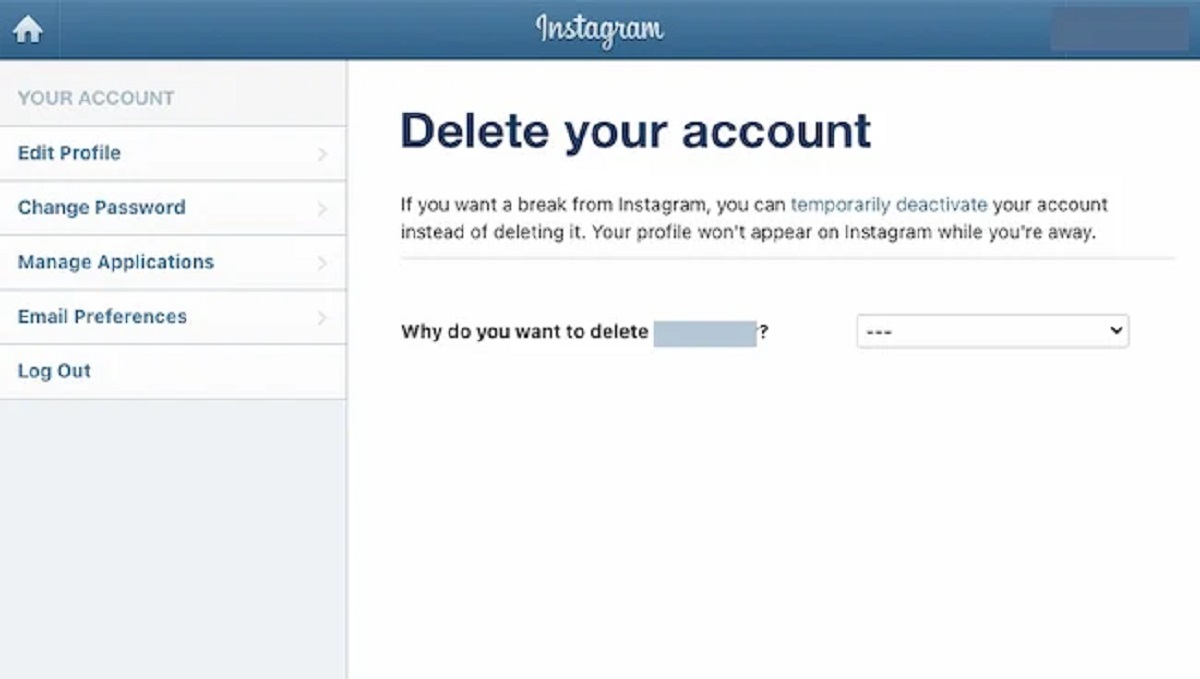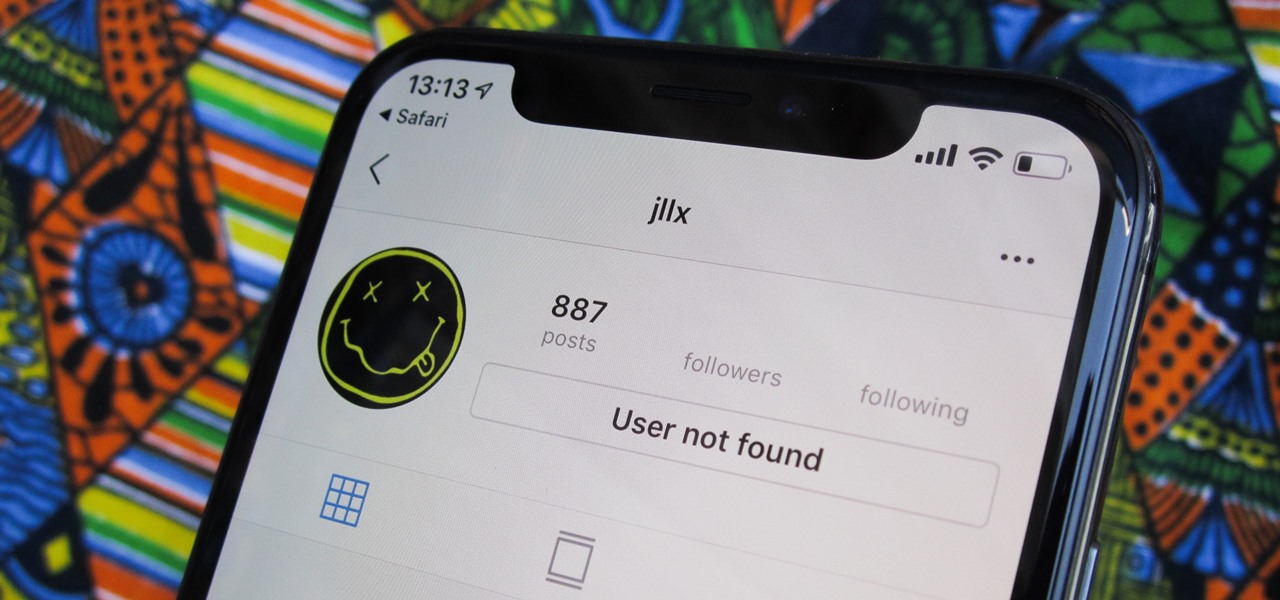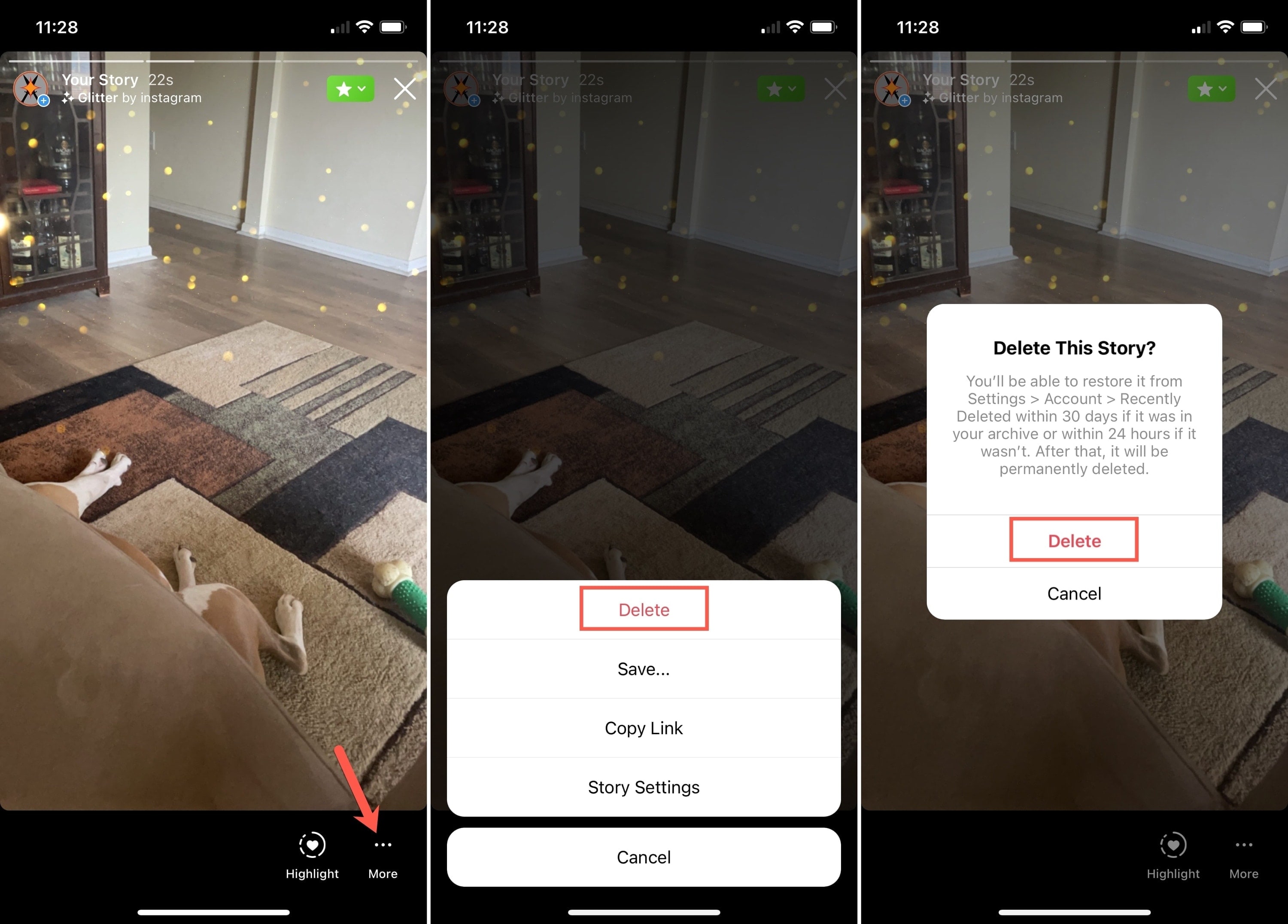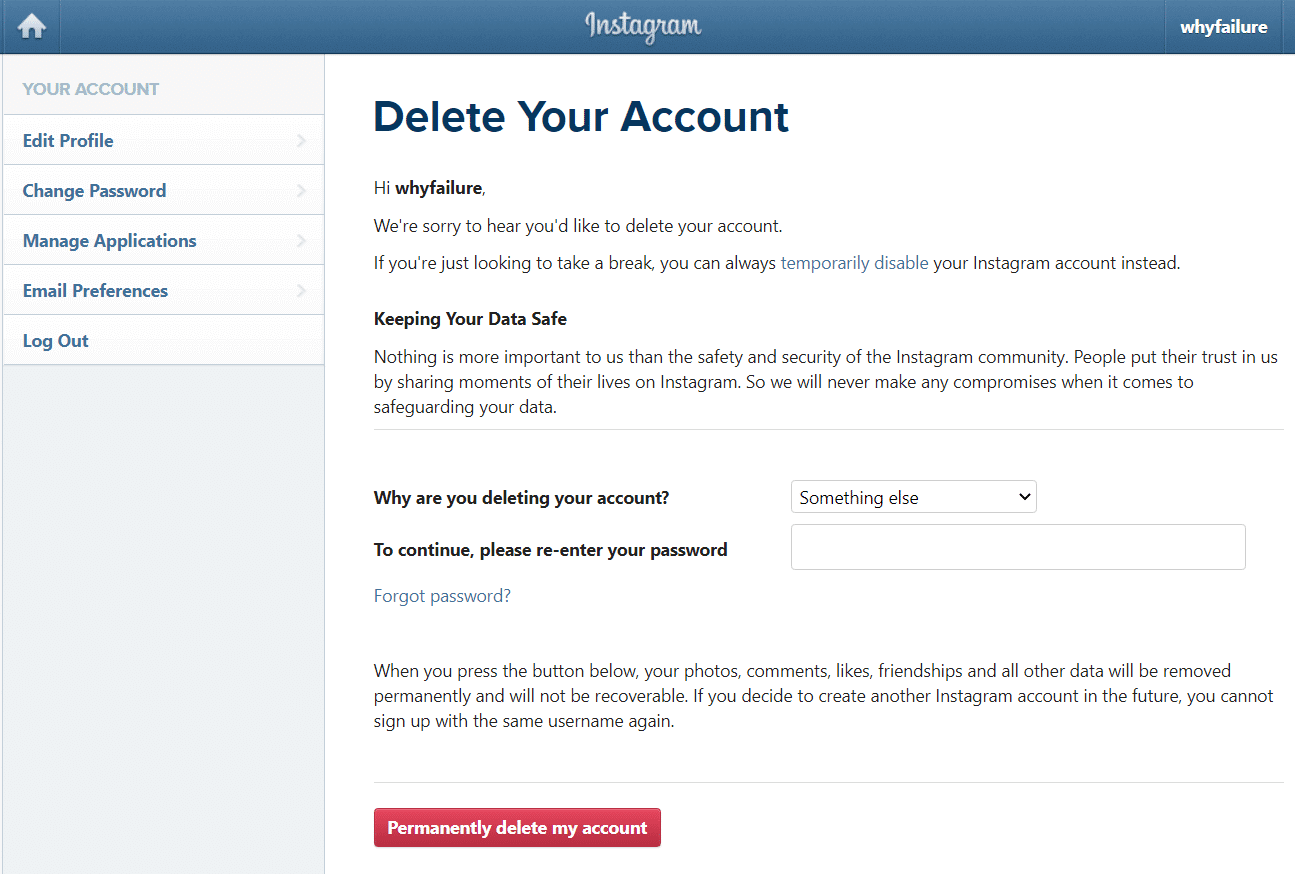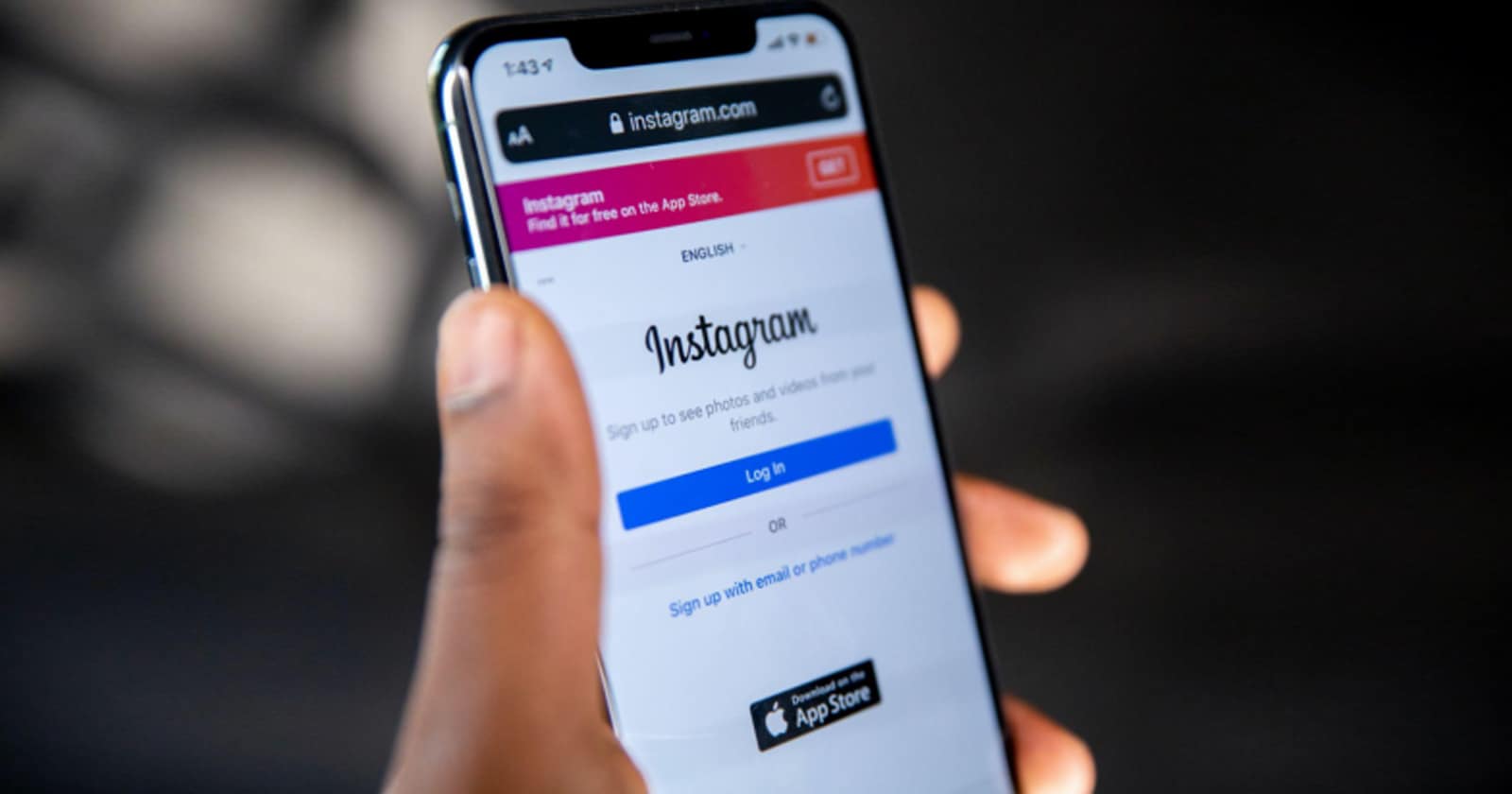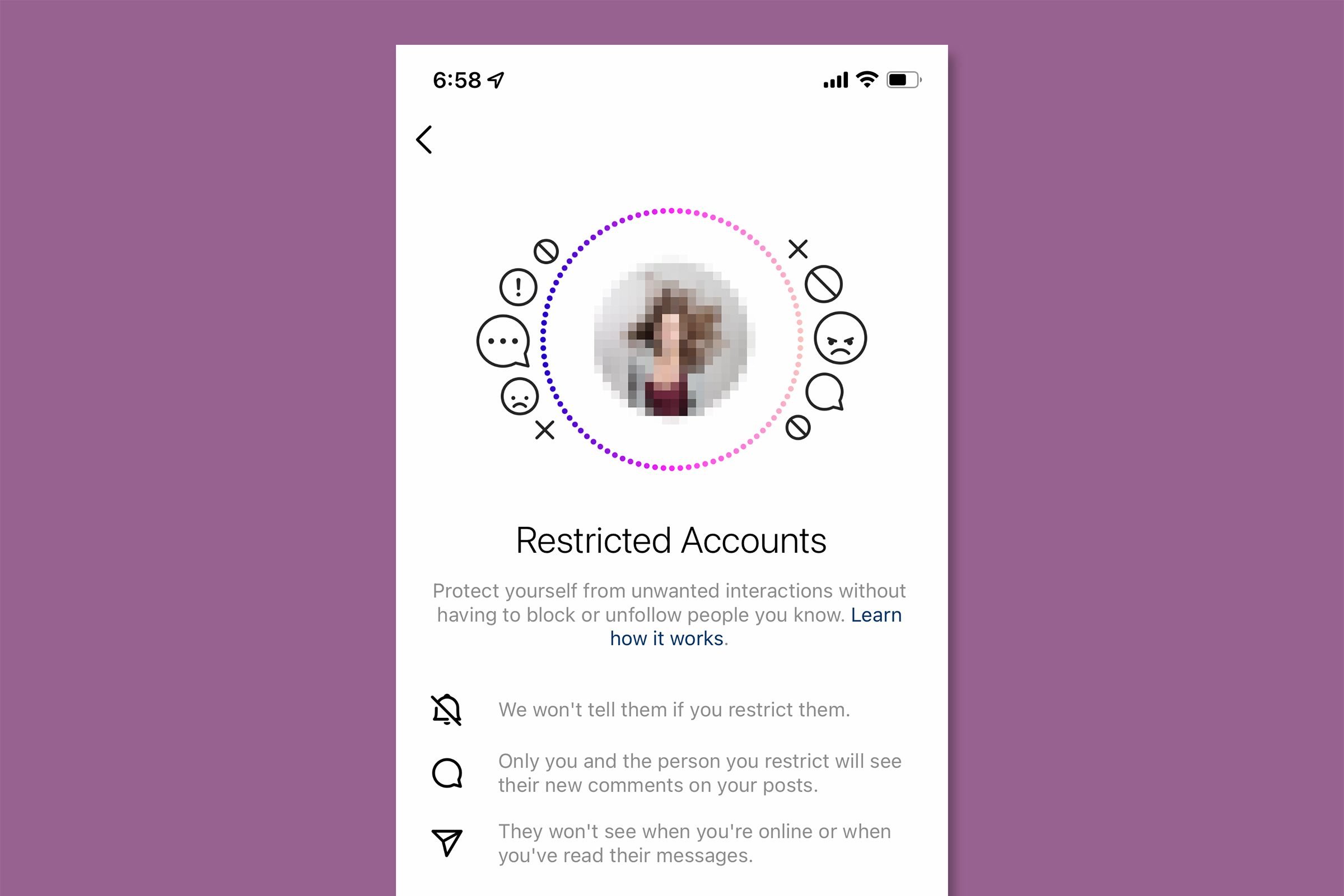What happens when you delete the Instagram app?
Deleting the Instagram app can have several effects on your usage and experience. Let’s explore what happens when you delete the app:
1. Limited access to your account: Once you delete the Instagram app from your device, you will no longer have easy access to your account. This means you won’t be able to browse your feed, post new photos or videos, or interact with other users directly through the app.
2. Reduced screen time: Deleting the app can help you reduce the amount of time spent on Instagram. Without the app readily available on your device, you won’t be tempted to scroll endlessly through your feed or get lost in a rabbit hole of content.
3. Peace of mind: If you find yourself constantly comparing your life to others or feeling pressure to maintain a certain image on Instagram, deleting the app can provide you with a much-needed break. It allows you to step away from the digital world and focus on real-life experiences.
4. Privacy and data concerns: Deleting the app can alleviate some privacy concerns. Instagram collects a significant amount of data from its users, including personal information and browsing habits. Removing the app reduces the likelihood of your data being shared or compromised.
5. Increased storage space: Instagram’s app can take up a significant amount of storage on your device, especially if you frequently use the platform. By deleting the app, you free up storage space for other apps, photos, or videos.
6. Change in social dynamics: Deleting Instagram may impact your social interactions. You won’t be able to see the latest updates from friends and acquaintances, and they won’t be able to see yours. This can shift the way you connect with others, leading to more meaningful in-person conversations.
7. Reassessing priorities: Removing Instagram from your device can help you reassess your priorities and how you spend your time. Without the distraction of constant scrolling and checking for new notifications, you may find yourself dedicating more attention to hobbies, relationships, and personal growth.
It’s important to note that deleting the Instagram app does not permanently delete your account. If you decide to return to the platform, you can easily reactivate your account and regain access to your followers and content.
How to delete the Instagram app on different devices
Deleting the Instagram app from your device is a simple process. Here’s a step-by-step guide on how to delete the Instagram app on various devices:
1. iOS (iPhone or iPad)
- Locate the Instagram app icon on your home screen.
- Long-press the app icon until it starts shaking.
- You will see an “x” symbol on the top left corner of the app icon. Tap on it.
- A confirmation message will pop up asking if you want to delete the app. Tap on “Delete” to confirm.
2. Android
- Go to your device’s Settings.
- Scroll down and tap on “Apps” or “Applications”.
- Find and tap on “Instagram” in the list of installed apps.
- Tap on “Uninstall” or “Remove” to delete the app.
- A confirmation message will appear. Tap on “OK” to confirm.
3. Windows 10
- Click on the “Start” menu on your desktop.
- Scroll through the list of installed apps and locate “Instagram”.
- Right-click on the Instagram app and select “Uninstall” from the drop-down menu.
- Follow the prompts to complete the uninstallation process.
4. Web (browser)
- Open your preferred web browser.
- Visit the Instagram website and log in to your account.
- Click on your profile picture in the top right corner to access your account settings.
- Scroll down and click on “Settings” from the menu.
- On the left side panel, click on “Privacy and Security”.
- Scroll down and click on “View Account Data”.
- In the “Account Data” section, click on “Delete Account”.
- Follow the prompts to confirm the deletion of your account.
Remember, deleting the Instagram app only removes it from your device. Your account and its data will still be accessible if you decide to reinstall the app in the future.
Will deleting the app delete your Instagram account?
No, deleting the Instagram app from your device will not delete your Instagram account. The app and your account are separate entities, and removing the app simply means you won’t have the app installed on your device or be able to access your account through it. Your account and all its data, including your followers, posts, and settings, will remain intact.
Even if you delete the app, you can still access your Instagram account through other platforms such as the Instagram website on a browser or third-party apps that allow you to manage your account. This means you can still log in, view your profile, interact with others, and make changes to your account settings.
If you want to permanently delete your Instagram account, you need to follow Instagram’s account deletion process, which is different from simply deleting the app. Permanently deleting your account is irreversible and will remove all your data from Instagram, including posts, comments, and followers.
To delete your Instagram account permanently:
- Visit the Instagram website and log in to your account.
- Navigate to the account deletion page.
- Select the reason for deleting your account from the drop-down menu.
- Re-enter your password to confirm the deletion.
- Click on “Permanently delete my account”.
It’s important to note that once you delete your Instagram account permanently, there is no way to recover it or any of the data associated with it. If you’re unsure about deleting your account, it’s advisable to deactivate it temporarily instead. Deactivating your account allows you to take a break from Instagram without permanently losing your profile and content. You can reactivate it at any time by logging in again.
Remember to carefully consider your decision before deleting or deactivating your Instagram account, as it can have long-term consequences on your online presence and connections. Consider taking breaks or implementing usage limitations instead of deleting the account completely if you’re unsure.
What happens to your followers and following?
When you delete the Instagram app or deactivate your account, there are several things that happen to your followers and following. Let’s take a closer look:
1. Followers:
Deleting the app or deactivating your account does not automatically remove your followers. Your followers will still see your profile, posts, and other activities unless you delete your account permanently. However, since you won’t be actively using the app, your followers won’t receive any new updates, posts, or notifications from you. It’s important to communicate your absence to your followers through posts, stories, or other channels to let them know the reason behind your inactivity.
2. Following:
When you delete the Instagram app, your ability to follow other Instagram accounts or interact with them directly through the app is temporarily suspended. However, your following list remains intact. This means that you will still be following the accounts you were previously following, and their posts will appear in your feed if you decide to reinstall the app or use other platforms to access your Instagram account.
It’s worth mentioning that your followers and following are tied to your account, not the app itself. So whether you are using the Instagram app, the website, or third-party apps, your followers and following list will remain the same as long as you have an active account.
3. Interactions:
With the app deleted or when your account is deactivated, you won’t be able to directly interact with your followers or those you follow through likes, comments, direct messages, or story interactions. However, if you choose to reactivate your account or access Instagram through other platforms, your ability to interact with your followers and those you follow will be restored.
If you delete your Instagram account permanently, your followers and following information will be completely removed, along with all your posts and data. This is irreversible, so make sure you consider this carefully before taking such action. Keep in mind that permanently deleting your account may result in losing connections and followers that you have built over time.
It’s important to communicate any changes or absences to your followers and maintain open channels of communication through other means, such as email newsletters or other social media platforms, to ensure that your followers stay informed and engaged with your content.
Can you still access your Instagram account on other platforms?
Absolutely! Even if you delete the Instagram app from your device, you can still access your Instagram account through various platforms and methods. Here’s a look at some alternative ways to access your Instagram account:
1. Instagram Website:
The most common and accessible alternative platform to access your Instagram account is through the official Instagram website. Simply open a web browser, visit the Instagram website, and log in with your account credentials. From there, you can interact with your followers, view and like posts, post new content, and manage your account settings.
2. Third-Party Apps:
There are several third-party apps available that allow you to manage your Instagram account. These apps provide additional features and functionality beyond what the official Instagram app offers. Some popular examples include Hootsuite, Later, and Buffer. These apps usually require you to link your Instagram account, and then you can access and manage your account from within the third-party app.
3. Desktop Applications:
In addition to the Instagram website, there are desktop applications available for both Windows and macOS that provide an enhanced Instagram experience. These applications often provide additional features, such as direct messaging, post scheduling, and advanced analytics. Some popular desktop applications for Instagram management include Gramblr and Flume.
4. Other Social Media Platforms:
Although Instagram is a popular standalone platform, you can still access your account indirectly through other social media platforms. For example, you can share Instagram content to your Facebook or Twitter accounts and interact with your Instagram followers through those platforms. This allows you to maintain some level of engagement with your audience even when you don’t have the Instagram app installed.
It’s important to note that while you can access your Instagram account through these alternative platforms, some features and functionalities may be limited compared to the official Instagram app. For a complete and seamless Instagram experience, it’s recommended to use the official app. However, these alternative options can be useful if you are taking a break from the app or want to manage your account in different ways.
Remember to prioritize the security of your Instagram account and be cautious when using third-party apps or providing your account credentials on unofficial platforms. Stick to trusted sources and applications to ensure the protection of your account information.
How to reactivate your Instagram account after deleting the app
If you have previously deleted the Instagram app or deactivated your account and now want to reactivate it, the process is fairly straightforward. Follow these steps to reactivate your Instagram account:
1. Install the Instagram app:
If you previously deleted the Instagram app from your device, you’ll need to reinstall it. Visit your device’s app store (App Store for iOS or Google Play Store for Android), search for Instagram, and download the app. Install it on your device like you would with any other app.
2. Open the app and log in:
Once the app is installed, open it and you’ll see the login screen. Enter the same login credentials (username and password) you used before when you deactivated or deleted the app. If you’ve forgotten your password, you can use the “Forgot Password” option and follow the prompts to reset it.
3. Confirm account reactivation:
After logging in, Instagram may prompt you with a message confirming that your account has been reactivated. This step is to ensure that you are aware of the reactivation and that you’re the one accessing the account.
4. Review and update settings (optional):
Now that your account is reactivated, you may want to review your account settings and make any necessary updates. This includes adjusting your privacy settings, changing your profile picture or bio, and ensuring your account is configured to your preferences.
It’s important to note that while reactivating your account brings back all your posts and followers, any actions or content you had deleted prior to deactivating your account may not be recovered. Additionally, if you had permanently deleted your account rather than deactivating it, you won’t be able to reactivate the same account or retrieve your data.
Reactivating your account allows you to get back into the Instagram community, view your previous posts and followers, and resume normal account activities. It’s a great option if you took a break and now want to reengage with your audience or continue sharing your content.
Remember to use Instagram responsibly and take regular breaks from the app if needed. It’s okay to take time away from social media to focus on your well-being and other aspects of your life.
Are there any alternative apps to replace Instagram?
While Instagram is a popular platform for sharing photos and connecting with others, there are several alternative apps available that offer similar features and experiences. Whether you’re looking for a different visual platform or seeking a more specialized community, here are some alternative apps that you can consider:
1. Snapchat:
Snapchat is a multimedia messaging app known for its disappearing photos and videos. It offers a range of creative tools and filters, and emphasizes more on real-time interactions and sharing content spontaneously. Snapchat is popular among younger users and offers a unique and playful experience compared to Instagram.
2. TikTok:
TikTok has become a global phenomenon, particularly among younger audiences. It allows users to create and share short video clips accompanied by music or audio. TikTok offers a highly addictive and entertaining experience, with a diverse range of content from dance challenges to comedic skits.
3. Pinterest:
Pinterest is a visual discovery platform that focuses on creating and sharing collections of images called “pins.” It is a great alternative for those looking for inspiration in various categories such as fashion, home décor, recipes, and more. Pinterest allows users to save and organize ideas onto themed boards.
4. VSCO:
VSCO is a photo and video editing app that provides a range of filters and editing tools to enhance your visual content. It also offers a built-in social platform where users can share their edited photos and discover other creators. VSCO is popular among photographers and those looking for more advanced editing capabilities.
5. 500px:
500px is a photography community app that focuses on showcasing high-quality, professional-level photos. It offers a platform for photographers to share their work and connect with other photographers. With features like categories, curated collections, and a rating system, 500px is a great alternative for those passionate about photography.
6. Ello:
Ello is a social networking platform that emphasizes an ad-free experience and focuses on connecting artists, designers, and creative individuals. It offers a minimalist design and is popular among the artistic community who value a more curated and intimate social media experience.
These are just a few alternative apps to Instagram, each offering its own unique experience and catering to different interests and preferences. It’s important to explore and experiment with these apps to find the one that aligns best with your needs and creative aspirations.
Remember, while alternative apps can provide different features and communities, Instagram remains a dominant player in the social media landscape. It’s advisable to consider using alternative apps alongside Instagram to diversify your online presence and reach a wider audience.
Pros and cons of deleting the Instagram app
Deleting the Instagram app can have both positive and negative impacts on your life and online presence. Let’s explore the pros and cons of deleting the Instagram app:
Pros:
1. Reduced screen time: Deleting the Instagram app can help reduce your screen time and break the addictive scrolling habit. It allows you to focus on other activities and allocate your time more productively.
2. Improved mental health: Taking a break from Instagram can improve your mental health by reducing feelings of comparison, anxiety, and FOMO (fear of missing out). It helps you disconnect from virtual distractions and focus on real-life experiences.
3. Enhanced privacy: Deleting the app can alleviate privacy concerns associated with Instagram’s data collection practices. By removing the app, you reduce the chances of your personal information being shared or compromised.
4. Increased storage space: Instagram’s app can take up a significant amount of storage on your device. Deleting the app frees up storage space, allowing you to utilize it for other apps, photos, or videos.
5. Self-reflection and reassessment: Deleting Instagram provides an opportunity for self-reflection and reassessing your relationship with social media. It allows you to evaluate your usage patterns, prioritize real-life connections, and shift your focus to personal growth.
Cons:
1. Disconnection from online community: Deleting the Instagram app means disconnecting from the online community and missing out on updates from friends, family, and influencers. It can lead to a sense of isolation and detachment from virtual connections.
2. Impact on personal brand or business: If you use Instagram as a platform for personal branding or promoting your business, deleting the app may have a negative impact on your online presence. It can make it difficult to maintain engagement, reach new audiences, and stay connected with followers.
3. Missing out on inspiration and trends: Instagram is a source of inspiration for many, with a wide range of content and trends that can spark creativity. Deleting the app means potentially missing out on these sources of inspiration and new ideas.
4. Difficulties in reestablishing presence: If you decide to come back to Instagram after deleting the app, reestablishing your online presence can be challenging. Rebuilding your follower base, engaging with new content, and regaining visibility may take time and effort.
5. Losing the convenience and platform-specific features: Instagram offers unique features such as stories, filters, and direct messaging that may not be readily available on alternative platforms. By deleting the app, you lose the convenience and functionality that Instagram provides.
The decision to delete the Instagram app depends on your personal goals, priorities, and the role Instagram plays in your life. Consider weighing the pros and cons to determine whether deleting the app aligns with your well-being, productivity, and online objectives.
Tips for maintaining a healthy relationship with Instagram
While Instagram can be a fun and creative platform, it’s important to maintain a healthy relationship with it. Here are some tips to help you use Instagram in a balanced and mindful way:
1. Set boundaries and establish usage limits: Determine how much time you want to spend on Instagram each day and stick to it. Set boundaries to avoid mindless scrolling and prioritize other important activities in your life.
2. Be selective with who you follow: Curate your Instagram feed by following accounts that inspire, motivate, or align with your interests. Unfollow accounts that make you feel inadequate or negatively impact your well-being.
3. Practice mindful consumption: Be aware of how Instagram affects your emotions and mental state. Notice if certain content triggers negative feelings and adjust your feed accordingly. Focus on engaging with content that brings positivity and inspiration into your life.
4. Engage authentically: When interacting with others on Instagram, be genuine and sincere. Leave meaningful comments, engage in conversations, and show support to build authentic connections.
5. Take breaks and digital detoxes: Regularly take breaks from Instagram to recharge and reconnect with the physical world. Consider scheduling “Instagram-free” days or weekends where you abstain from using the app entirely.
6. Practice self-care and self-compassion: Remember that Instagram is a highlight reel, and it’s easy to compare yourself to curated images. Take care of yourself by practicing self-care and cultivating self-compassion. Focus on your own journey and celebrate your achievements.
7. Use Instagram with intention: Before opening the app, remind yourself of your purpose for using Instagram. Whether it’s to share your creativity, connect with others, or seek inspiration, approach Instagram with intention and a clear sense of your goals.
8. Seek support from community: Join or create communities or groups within Instagram that align with your interests or aspirations. Engage in conversations, ask for help or advice, and gain support from like-minded individuals.
9. Be mindful of the comparison trap: Understand that everyone’s Instagram feed may present an idealized version of their lives. Avoid comparing yourself to others and remember that what you see on Instagram is just a fraction of the whole picture.
10. Focus on quality over quantity: Instead of striving for a high number of followers or likes, focus on creating quality content that resonates with your audience. Prioritize authenticity, creativity, and meaningful connections over popularity metrics.
By implementing these tips, you can develop a healthier and more balanced relationship with Instagram. Remember, it’s essential to prioritize your well-being, mental health, and real-life experiences above the virtual world of social media.







